
漢德百科全書 | 汉德百科全书
 Luiz Inácio Lula da Silva
Luiz Inácio Lula da Silva

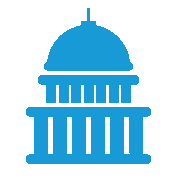 Party and government
Party and government

 Party and government
Party and government
 *President or Chairman
*President or Chairman

 Party and government
Party and government
 Group of the twenty most important industrial and emerging countries
Group of the twenty most important industrial and emerging countries

 Party and government
Party and government
 BRICS
BRICS

路易斯·伊纳西奥·卢拉·达席尔瓦(葡萄牙语:Luiz Inácio Lula da Silva,巴西葡萄牙语发音:[luˈiz iˈnasju ˈlulɐ dɐ ˈsiwvɐ] (ⓘ);1945年10月27日—),通称“卢拉”(Lula),是巴西左翼政治家,巴西第35任(2003年—2010年)及第39任(现任)总统,巴西劳工党创始成员。巴西历史上第一位工人出身的总统、第二位通过直接选举获得连任的总统。
Luiz Inácio Lula da Silva [luˈiz iˈnasju ˈlulɐ da ˈsiwvɐ] (* 27. Oktober 1945 als Luiz Inácio da Silva in Caetés, Pernambuco), auch bekannt als Lula da Silva, jedoch meist nur Lula genannt, ist ein brasilianischer Politiker. Er war vom 1. Januar 2003 bis zum 1. Januar 2011 Präsident Brasiliens und ist dies erneut seit dem 1. Januar 2023.
 Masoud Pezeshkian
Masoud Pezeshkian

 Party and government
Party and government

 Party and government
Party and government
 BRICS
BRICS

 Party and government
Party and government
 BRICS
BRICS
 President or Chairman
President or Chairman
 President or Chairman
President or Chairman
 Iran
Iran

马苏德·佩泽希齐扬(波斯语:مسعود پزشکیان,罗马化:Masoud Pezeshkian,发音:[mæsʔˈuːd pezeʃkiːˈjɒːn];1954年9月29日—),伊朗医师及改革派政治家,现任伊朗总统。
Massud Peseschkian (persisch مسعود پزشکیان, DMG Mas‘ūd-e Pezeškiyān; geboren am 29. September 1954 in Mahabad, West-Aserbaidschan, Iran) ist ein iranischer Politiker und seit 2024 Präsident des Iran.
 Mohamed bin Zayed Al Nahyan
Mohamed bin Zayed Al Nahyan

 Party and government
Party and government

 Party and government
Party and government
 BRICS
BRICS
 President or Chairman
President or Chairman
 President or Chairman
President or Chairman
 United Arab Emirates
United Arab Emirates
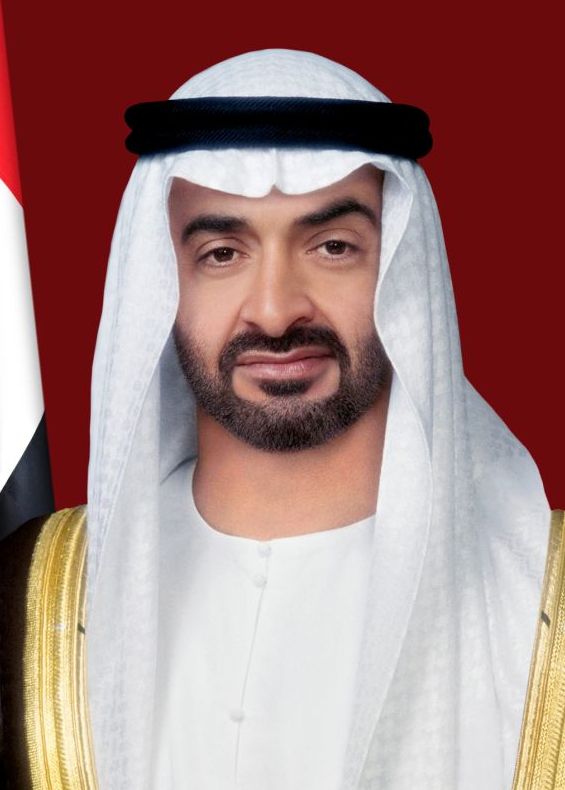
 Narendra Modi
Narendra Modi

 Party and government
Party and government
 *President or Chairman
*President or Chairman

 Party and government
Party and government
 Group of the twenty most important industrial and emerging countries
Group of the twenty most important industrial and emerging countries

 Party and government
Party and government
 BRICS
BRICS
 Prime Minister of India
Prime Minister of India
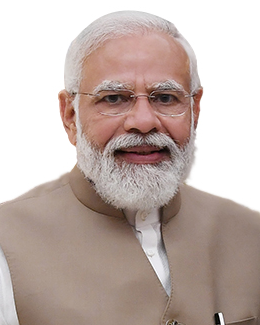
 *Track and field athletics
*Track and field athletics
 4x100 m Men
4x100 m Men
 BRICS summit
BRICS summit
 Commonwealth of Nations
Commonwealth of Nations
 Leichtathletik-Weltmeisterschaften
Leichtathletik-Weltmeisterschaften
 2001 Edmonton
2001 Edmonton

 Party and government
Party and government
 Group of the twenty most important industrial and emerging countries
Group of the twenty most important industrial and emerging countries

 Party and government
Party and government
 BRICS
BRICS
 South Africa
South Africa



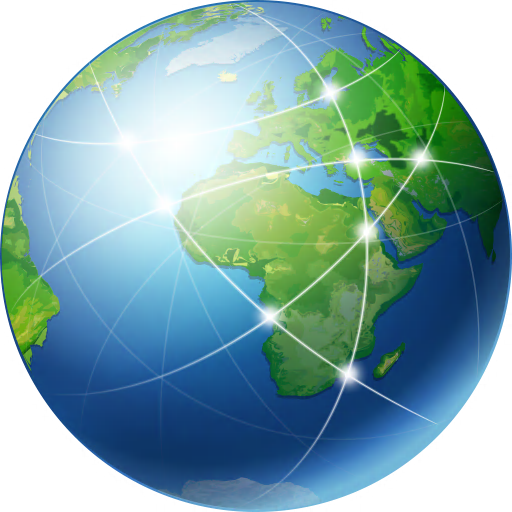 Geography
Geography

 Party and government
Party and government
 Group of the twenty most important industrial and emerging countries
Group of the twenty most important industrial and emerging countries

 Party and government
Party and government
 BRICS
BRICS
 Saudi Arabia
Saudi Arabia
 *Political system of the People's Republic of China
*Political system of the People's Republic of China
 General Secretary of the Central Committee of the Communist Party of China
General Secretary of the Central Committee of the Communist Party of China
 *Political system of the People's Republic of China
*Political system of the People's Republic of China
 President of the People's Republic of China
President of the People's Republic of China
 *Political system of the People's Republic of China
*Political system of the People's Republic of China
 Chairman of the Central Military Commission of the People's Republic of China
Chairman of the Central Military Commission of the People's Republic of China

 Party and government
Party and government
 *President or Chairman
*President or Chairman

 Party and government
Party and government
 Group of the twenty most important industrial and emerging countries
Group of the twenty most important industrial and emerging countries

 Party and government
Party and government
 BRICS
BRICS
 Xi Jingping
Xi Jingping

 Cyril Ramaphosa
Cyril Ramaphosa

 Party and government
Party and government
 Group of the twenty most important industrial and emerging countries
Group of the twenty most important industrial and emerging countries

 Party and government
Party and government
 *President or Chairman
*President or Chairman

 Party and government
Party and government
 BRICS
BRICS

 Party and government
Party and government
 BRICS
BRICS
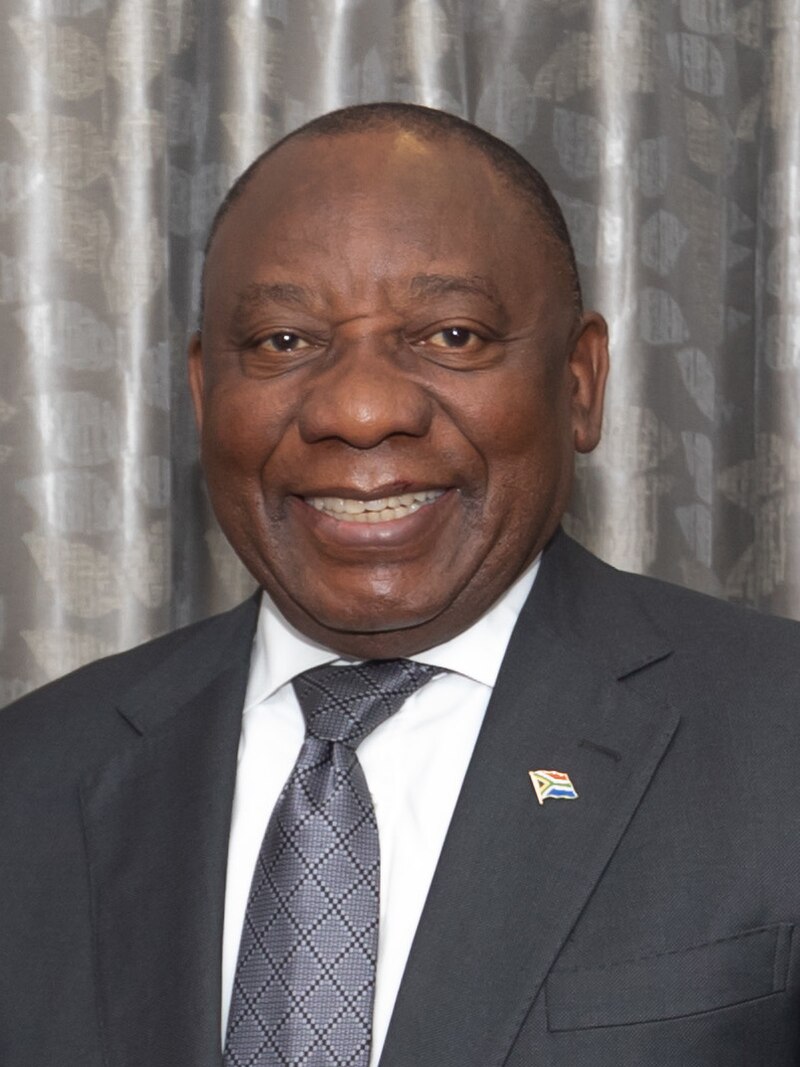
Matamela Cyril Ramaphosa [ramaˈpʰɔsa] (* 17. November 1952 in Johannesburg) ist ein südafrikanischer Politiker (ANC), Gewerkschaftsführer und Unternehmer. Von Mai 2014 bis Februar 2018 war er Vizepräsident Südafrikas unter Jacob Zuma, seit Dezember 2017 ist er Vorsitzender des ANC. Ramaphosa ist seit Februar 2018 Präsident der Republik Südafrika. Bei der Parlamentswahl am 29. Mai 2024 erhielt der ANC 40,2 % der Stimmen und erzielte damit erstmals keine absolute Mehrheit. Ramaphosa wurde am 14. Juni 2024 von dem neu gewählten Parlament für eine zweite Amtszeit bestätigt.
马塔梅拉·西里尔·拉马福萨(文达语:Matamela Cyril Ramaphosa,1952年11月17日—),南非政治家、商人及工会领袖[1]。他于2014年6月成为南非副总统[2],并在2017年12月当选非洲人国民大会主席[3]。2018年2月14日晚上,拉马福萨接替刚辞职的时任总统雅各布·祖玛,出任代总统。2月15日,他正式获国民议会选出,成为第5任南非总统,并于2024年连任至今[4]。
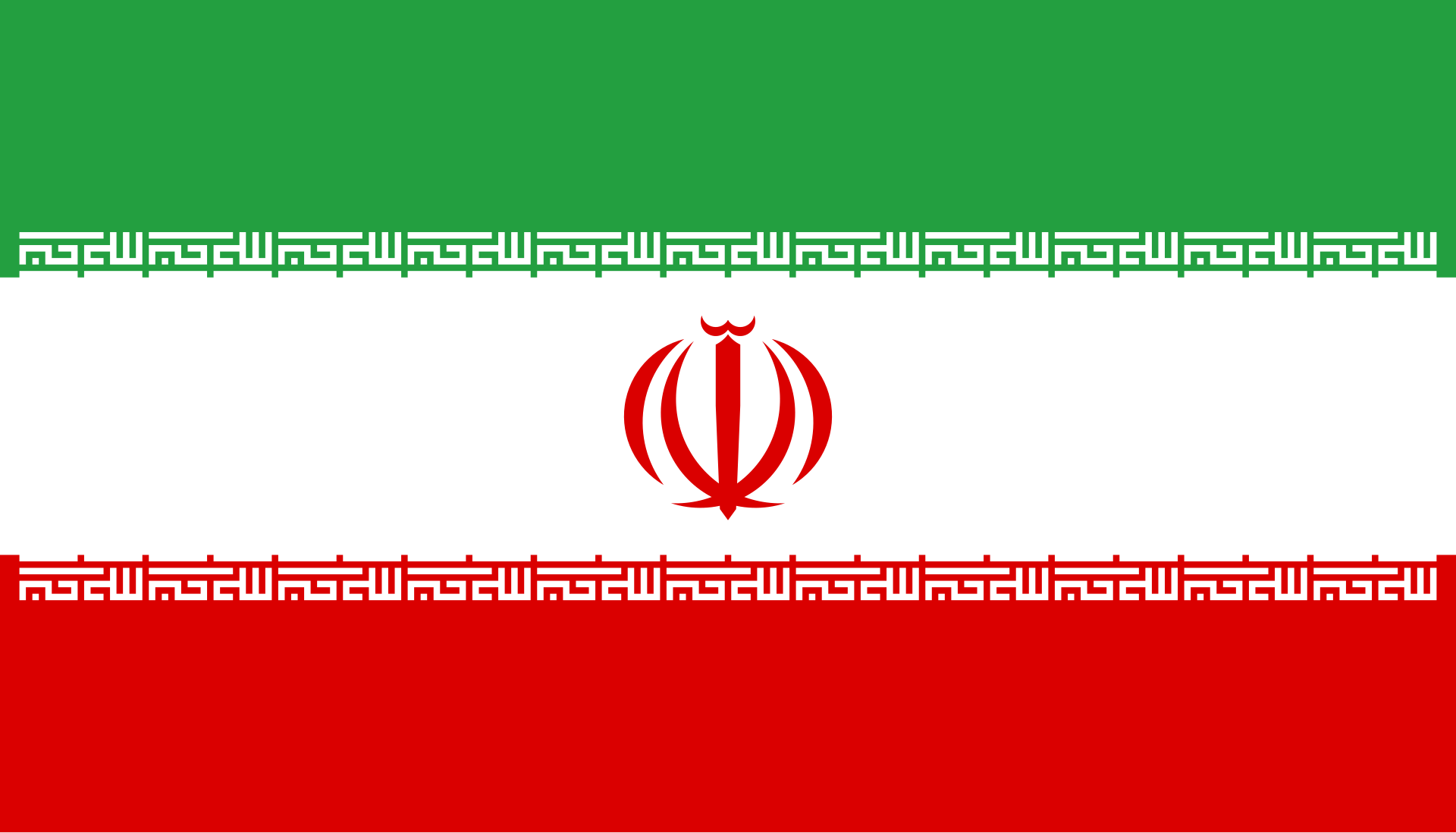

Iran, auch: der Iran (mit Artikel),[6] persisch ايران, DMG Īrān, [ʔiːˈɾɒːn], Vollform: Islamische Republik Iran, vor 1935 auf internationaler Ebene (exonym) auch Persien, ist ein Staat in Vorderasien. Mit rund 83 Millionen Einwohnern (Stand 2019)[7] und einer Fläche von 1.648.195 Quadratkilometern zählt Iran zu den 20 bevölkerungsreichsten und größten Staaten der Erde. Hauptstadt, größte Stadt und wirtschaftlich-kulturelles Zentrum Irans ist Teheran, weitere Millionenstädte sind Maschhad, Isfahan, Täbris, Karadsch, Schiras, Ahvaz und Ghom. Der Iran bezeichnet sich selbst seit der Islamischen Revolution 1979 als Islamische Republik.
Iran besteht großteils aus hohem Gebirge und trockenen, wüstenhaften Becken. Seine Lage zwischen dem Kaspischen Meer und der Straße von Hormus am Persischen Golf macht ihn zu einem Gebiet von hoher geostrategischer Bedeutung mit langer, bis in die Antike zurückreichender Geschichte.
Nachdem sich zwischen 3200 und 2800 v. Chr. das Reich Elam gebildet hatte, vereinigten die iranischen Meder das Gebiet um 625 v. Chr. erstmals zu einem Staat, der die kulturelle und politische Führerschaft in der Region übernahm. Die von Kyros begründete Dynastie der Achämeniden regierte von Südiran aus das bis dato größte Reich der Geschichte. Es wurde im Jahre 330 v. Chr. durch die Truppen Alexanders des Großen zerstört. Nach Alexander teilten seine Nachfolger (Diadochen) das Reich unter sich auf, bis sie im iranischen Bereich um die Mitte des 3. Jahrhunderts v. Chr. durch die Parther abgelöst wurden. Auf diese folgte ab etwa 224 n. Chr. das Reich der Sassaniden, das bis zum 7. Jahrhundert neben dem Byzantinischen Reich zu den mächtigsten Staaten der Welt zählte. Nach dem Übergreifen der islamischen Expansion auf Persien, in deren Verlauf der Zoroastrismus durch den Islam ersetzt wurde, wurden persische Gelehrte zu Trägern des Goldenen Zeitalters, bis der Mongolensturm im 13. Jahrhundert das Land in seiner Entwicklung weit zurückwarf.
Die Safawiden einigten das Land und machten 1501 das zwölferschiitische Bekenntnis zur Staatsreligion. Unter der 1794 gegründeten Kadscharen-Dynastie schrumpfte der Einfluss Persiens; Russland und Großbritannien zwangen die Perser zu territorialen und wirtschaftlichen Konzessionen. 1906 kam es zur konstitutionellen Revolution, in deren Ergebnis Persien sein erstes Parlament und eine Verfassung erhielt, in der Gewaltenteilung vorgesehen war. Als Staatsform erhielt es die konstitutionelle Monarchie. Die beiden Monarchen der Pahlavi-Dynastie betrieben eine Politik der Modernisierung und Säkularisierung, parallel dazu wurde das Land im Ersten Weltkrieg durch russische, britische und türkische Truppen und im Zweiten Weltkrieg durch britische und sowjetische Truppen besetzt. Danach kam es wiederholt zu ausländischer Einflussnahme wie der Gründung einer Autonomen Republik Aserbaidschan mit sowjetischer Hilfe oder einem von der CIA organisierten Staatsstreich im Jahr 1953. Die Unterdrückung der liberalen, kommunistischen und islamischen Opposition führte zu vielseitigen Spannungen, die in der Revolution von 1979 und dem Sturz des Schahs kulminierten.
Seitdem ist Iran eine theokratische Republik, die von schiitischen Geistlichen geführt wird, an deren Spitze der Religionsführer die Macht auf sich konzentriert. Kontrolliert wird er nur vom Expertenrat. Regelmäßige Wahlen werden abgehalten, aber aufgrund der umfassenden Einhegung durch die Machthaber, von Manipulationsvorwürfen und der unbedeutenden Stellung des Parlamentes sowie des Präsidenten als undemokratisch kritisiert. Der iranische Staat kontrolliert nahezu jeden Aspekt des täglichen Lebens in Hinblick auf religiöse und ideologische Konformität und durchdringt so das Leben aller Bürger und beschneidet die Freiheit des Einzelnen. Es gibt im Iran keine umfassende Presse- oder Meinungsfreiheit. Seit der Islamischen Revolution haben sich die guten Beziehungen zu westlichen Staaten in eine offene Feindschaft gewandelt, die vor allem bezüglich der ehemals befreundeten USA und Israel auch fest in der Staatsideologie verankert ist. Der Iran ist außenpolitisch weitgehend isoliert, gleichzeitig eine Regionalmacht im Nahen Osten.
Neben ethnischen Persern leben im Iran zahlreiche andere Völker, die ihre eigene sprachliche und kulturelle Identität besitzen. Die Amtssprache ist Persisch. Die größten ethnischen Gruppen nach den Persern sind Aserbaidschaner, Kurden und Luren. Die Völker des Iran verfügen über lange Traditionen in Kunsthandwerk, Architektur, Musik, Kalligraphie und Poesie; im Land befinden sich zahlreiche Stätten des UNESCO-Welterbes.
伊朗伊斯兰共和国(波斯语:جمهوری اسلامی ایران,Jomhuriye Eslâmiye Irân,[dʒomhuːˌɾije eslɒːˌmije ʔiːˈɾɒn]),通称伊朗(波斯语:ایران,Irān,[ʔiːˈɾɒːn] (![]() 发音) ),1501年之前很长一段历史时间被外界称波斯[注 2],位于西亚,为中东国家,其中北部紧靠里海、南濒波斯湾和阿拉伯海。伊朗东邻巴基斯坦和阿富汗,东北部与土库曼斯坦接壤,西北与阿塞拜疆和亚美尼亚,以及国际上属阿塞拜疆的纳希切万自治共和国为邻,西接土耳其和伊拉克(库尔德斯坦)。国土面积为1,648,195平方公里,国土主要位于伊朗高原上,气候较为干燥。人口8320万人,为多民族国家,其主体民族为波斯人,约占总人口的52%,其余有阿塞拜疆人、库尔德人、阿拉伯人等。官方语言为波斯语。伊斯兰教什叶派的十二伊玛目宗(信众超过全国人口的90%)为伊朗国教,宪法承认的其余教派有伊斯兰教逊尼派、祆教、犹太教、基督宗教等。首都为德黑兰。
发音) ),1501年之前很长一段历史时间被外界称波斯[注 2],位于西亚,为中东国家,其中北部紧靠里海、南濒波斯湾和阿拉伯海。伊朗东邻巴基斯坦和阿富汗,东北部与土库曼斯坦接壤,西北与阿塞拜疆和亚美尼亚,以及国际上属阿塞拜疆的纳希切万自治共和国为邻,西接土耳其和伊拉克(库尔德斯坦)。国土面积为1,648,195平方公里,国土主要位于伊朗高原上,气候较为干燥。人口8320万人,为多民族国家,其主体民族为波斯人,约占总人口的52%,其余有阿塞拜疆人、库尔德人、阿拉伯人等。官方语言为波斯语。伊斯兰教什叶派的十二伊玛目宗(信众超过全国人口的90%)为伊朗国教,宪法承认的其余教派有伊斯兰教逊尼派、祆教、犹太教、基督宗教等。首都为德黑兰。
伊朗古称波斯,在公元前28世纪建立的古埃兰王国和之后建立的米底王国是伊朗高原文明的发源地。到公元前550年,由居鲁士大帝建立了大一统的古代大帝国波斯帝国。公元7世纪中叶,波斯的萨珊王朝被阿拉伯征服,包括伊朗高原的中东地区开始伊斯兰化,而曾占统治地位的祆教则日渐式微。近代,波斯逐渐沦为英国和俄国的半殖民地。1925年,巴列维王朝建立。二战后,国王穆罕默德-礼萨·巴列维逐渐摆脱英、苏两国对伊朗的控制,奉行亲美政策,国家经济建设获得较大发展,在中东地区获得了较大的影响力。1979年初,鲁霍拉·穆萨维·霍梅尼领导的伊斯兰革命爆发,王朝政权被推翻,成立伊朗伊斯兰共和国,同年底发生美国驻伊使馆人质事件,伊朗转为反美的先锋,与以美国为首的西方国家交恶。
伊朗伊斯兰共和国实行政教合一的政治体制,伊斯兰教在国家的政治生活中担任非常重要的角色,最高领袖是国家的最高领导人和武装力量最高统帅,由伊斯兰教神职人员组成的专家会议选举产生,霍梅尼为首任最高领袖,现任最高领袖为赛义德阿里·侯赛尼·哈梅内伊。伊朗政府实行总统内阁制,总统是继最高领袖之后的国家第二号领导人,既是国家元首,又是政府首脑,但不是军事统帅,由全民普选产生,现任总统为哈桑·鲁哈尼,第一副总统为艾沙格·贾汉基里。伊朗最高立法机构为伊斯兰议会,实行一院制,现任议长为阿里·拉里贾尼。伊朗司法总监是伊朗的司法最高首脑,由最高领袖任命,最高法院院长和总检察长则由司法总监任命,现任司法总监为萨迪格·拉里贾尼。
伊朗是亚洲和中东主要经济体之一,经济实力较强,2012年国内生产总值为5485.9亿美元,居世界第21位,人均国内生产总值7207美元,居世界第76位(国际货币基金组织数据)。石油产业是伊朗的支柱,伊朗是世界第四大石油生产国、石油输出国组织第二大石油输出国。伊朗的货币名称为里亚尔,主要的贸易伙伴有中国、印度、阿拉伯联合酋长国、土耳其等。伊朗奉行独立、不结盟的对外政策,同时是联合国、不结盟运动、伊斯兰会议组织、石油输出国组织的创始会员国。
イラン・イスラム共和国(イラン・イスラムきょうわこく、ペルシア語:جمهوری اسلامی ایران)、通称イランは、アジア・中東に位置するイスラム共和制国家。北西にアルメニアとアゼルバイジャン、北にカスピ海、北東にトルクメニスタン、東にアフガニスタンとパキスタン、南にペルシア湾とオマーン湾、西にトルコ、イラク(クルディスタン)と境を接する。また、ペルシア湾を挟んでクウェート、サウジアラビア、バーレーン、カタール、アラブ首長国連邦に面する。ペルシア、ペルシャともいう。
前6世紀のアケメネス朝時代から繁栄し、ササン朝時代にはゾロアスター教が国教だったが、642年にアラブ人に滅ぼされ、イスラム教が広まった。16世紀初めに成立したサファビー朝がシーア派十二イマーム派を国教とし、イラン人の国民意識を形成した。18世紀のカージャール朝を経て、1925年からパフラヴィー朝になったが、1979年のルーホッラー・ホメイニー師によるイラン革命により王政は廃され、宗教上の最高指導者が国の最高権力を持つイスラム共和制が樹立された[4]。
政治体制は、1979年に制定されたイラン・イスラーム共和国憲法によって規定されており、国の元首である最高指導者の地位は、宗教法学者に賦与され、自由は「イスラムの原則に反しない限り」でしか認められない[5]。憲法では三権分立が規定され、立法権は一院制の国民議会、行政権は大統領にあるが、大統領の地位は最高指導者に劣る。イラン革命とシーア派に忠実であることが資格として要求される[5]。ヒューマン・ライツ・ウォッチは政府が抗議者に対して恣意的な逮捕を行い、治安当局や諜報当局による深刻な虐待が行われていることを報告している[6]。エコノミスト誌傘下の研究所エコノミスト・インテリジェンス・ユニットによる民主主義指数は、世界151位と後順位で「独裁政治体制」に分類されている(2019年度)[7]。国境なき記者団による世界報道自由度ランキングも173位と後順位で最も深刻な国の一つに分類されている(2020年度)[8]。
外交面ではパフラヴィー朝時代にはアメリカ合衆国の強い影響下にあったが、革命によりアメリカとの関係が悪化、特にアメリカ大使館人質事件以降、公然たる敵対関係に入った。アメリカからはテロ支援国家に指定されている[5]。 他方でイラン革命指導者は反共主義者が多いため、ソビエト連邦とも友好的ではなく、革命後の外交は排外主義的な非同盟中立路線を基本とする[5]。近年は核兵器開発を行っている疑惑から経済制裁を受けている。2015年にオバマ政権下のアメリカと核合意を締結して制裁解除を取り付けたが、トランプ政権が破棄し制裁が再開されたため、段階的に核合意履行停止を進めている[9]。
経済面ではパフラヴィー朝時代にアメリカからの経済援助を元手に経済各分野の近代化を進め、高度経済成長を成し遂げた。イラン革命の混乱とイラン・イラク戦争で経済は停滞したが、その後立て直しが図られた[5]。世界有数の石油の産出地であり、それが国の主要財源である[4]。しかし近年は長引くアメリカの制裁と新型コロナウイルスのパンデミックにより経済状態が深刻化している[10]。
軍事面では王政時代からの伝統を持つ正規軍と別に、革命後に創設された革命防衛隊という最高指導者直轄の親衛隊的軍事組織が存在するのが特徴である[11][12]。革命防衛隊はイラン国外の対外工作にも深くかかわり[13]、アメリカのトランプ政権から「テロ組織」に指定された[14]。男性に2年の兵役を課す徴兵制を採用しており[15]、兵力は61万人ほどである(2020年時)[16]。
2017年の国勢調査によると人口は約8千万人で、世界で17位であった。多くの民族と言語が存在する多文化国家であり、主要な民族の構成はペルシア人(61%)、アゼルバイジャン人(35%)、クルド人(10%)、ロル族(6%)である。宗教は99%がイスラム教徒でその大部分(89%)がシーア派である。トルクメン人、バルーチ人、クルド人など10%がスンニ派を信仰している。極めて少数派としてユダヤ教、キリスト教、ゾロアスター教、バハーイー教の教徒もいるが、バハーイー教は非合法にされている[5]。言語はペルシア語が公用語で大半を占めているが、他にクルド語やアゼルバイジャン語などがある[4]。
地理としては、総面積は1,648,195 平方キロメートル(km2)で、中東で2番目に大きく、世界では17位である。北部を東西にアルボルズ山脈が、北西部から南東部にザーグロス山脈が走り、その間にイラン高原が広がる。国土のほとんどがイラン高原上にある[5]。同国はユーラシアの中心に位置し、ホルムズ海峡に面するため、地政学的に重要な場所にある。首都であるテヘランは同国の最も大きな都市であり、経済と文化の中心地でもある。イランには文化的な遺産が多く存在し、ユネスコの世界遺産には22個登録されている。これはアジアでは3番目、世界では11番目に多い。
Iran (Persian: ایران Irān [ʔiːˈɾɒːn] (![]() listen)), also called Persia,[11] and officially the Islamic Republic of Iran,[a] is a country in Western Asia. It is bordered to the northwest by Armenia and Azerbaijan,[b] to the north by the Caspian Sea, to the northeast by Turkmenistan, to the east by Afghanistan, to the southeast by Pakistan, to the south by the Persian Gulf and the Gulf of Oman, and to the west by Turkey and Iraq. Iran covers an area of 1,648,195 km2 (636,372 sq mi), with a population of 83 million. It is the second-largest country in the Middle East, and its capital and largest city is Tehran.
listen)), also called Persia,[11] and officially the Islamic Republic of Iran,[a] is a country in Western Asia. It is bordered to the northwest by Armenia and Azerbaijan,[b] to the north by the Caspian Sea, to the northeast by Turkmenistan, to the east by Afghanistan, to the southeast by Pakistan, to the south by the Persian Gulf and the Gulf of Oman, and to the west by Turkey and Iraq. Iran covers an area of 1,648,195 km2 (636,372 sq mi), with a population of 83 million. It is the second-largest country in the Middle East, and its capital and largest city is Tehran.
Iran is home to one of the world's oldest civilizations,[12][13] beginning with the formation of the Elamite kingdoms in the fourth millennium BC. It was first unified by the Iranian Medes in the seventh century BC,[14] and reached its territorial height in the sixth century BC, when Cyrus the Great founded the Achaemenid Empire, which became one of the largest empires in history and the world's first superpower.[15] The empire fell to Alexander the Great in the fourth century BC and was divided into several Hellenistic states. An Iranian rebellion established the Parthian Empire in the third century BC, which was succeeded in the third century AD by the Sasanian Empire, a major world power for the next four centuries.[16][17] Arab Muslims conquered the empire in the seventh century AD, which led to the Islamization of Iran. It subsequently becoming a major center of Islamic culture and learning, with its art, literature, philosophy, and architecture spreading across the Muslim world and beyond during the Islamic Golden Age. Over the next two centuries, a series of native Muslim dynasties emerged before the Seljuq Turks and the Mongols conquered the region. In the 15th century, the native Safavids re-established a unified Iranian state and national identity[4] and converted the country to Shia Islam.[5][18] Under the reign of Nader Shah in the 18th century, Iran once again became a major world power,[19][page needed] though by the 19th century a series of conflicts with Russia led to significant territorial losses.[20][21] The early 20th century saw the Persian Constitutional Revolution. Efforts to nationalize its fossil fuel supply from Western companies led to an Anglo-American coup in 1953, which resulted in greater autocratic rule under Mohammad Reza Pahlavi and growing Western political influence.[22] He went on to launch a far-reaching series of reforms in 1963.[23] After the Iranian Revolution, the current Islamic Republic was established in 1979[24] by Ruhollah Khomeini, who became the country's first Supreme Leader.
The Government of Iran is an Islamic theocracy which includes elements of a presidential democracy, with the ultimate authority vested in an autocratic "Supreme Leader",[25] a position held by Ali Khamenei since Khomeini's death in 1989. The Iranian government is widely considered to be authoritarian, and has attracted widespread criticism for its significant constraints and abuses against human rights and civil liberties,[26][27][28][29] including several violent suppressions of mass protests, unfair elections, and limited rights for women and children.
Iran is a regional and middle power, with a geopolitically strategic location in the Asian continent.[30] It is a founding member of the United Nations, the ECO, the OIC, and the OPEC. It has large reserves of fossil fuels—including the world's second-largest natural gas supply and the fourth-largest proven oil reserves.[31] The country's rich cultural legacy is reflected in part by its 22 UNESCO World Heritage Sites.[32] Historically a multinational state, Iran remains a pluralistic society comprising numerous ethnic, linguistic, and religious groups, the largest being Persians, Azeris, Kurds, Mazandaranis and Lurs.[3]
 Atomic bomb
Atomic bomb
 BRICS summit
BRICS summit
 Commonwealth of Nations
Commonwealth of Nations

 History
History
 M 1500 - 2000 AD
M 1500 - 2000 AD

 History
History

 History
History

 History
History
 N 2000 - 2100 AD
N 2000 - 2100 AD
 History of India
History of India
 India
India

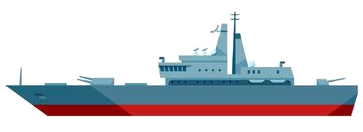
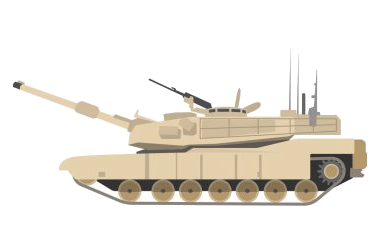
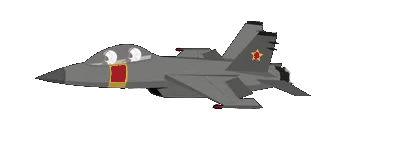
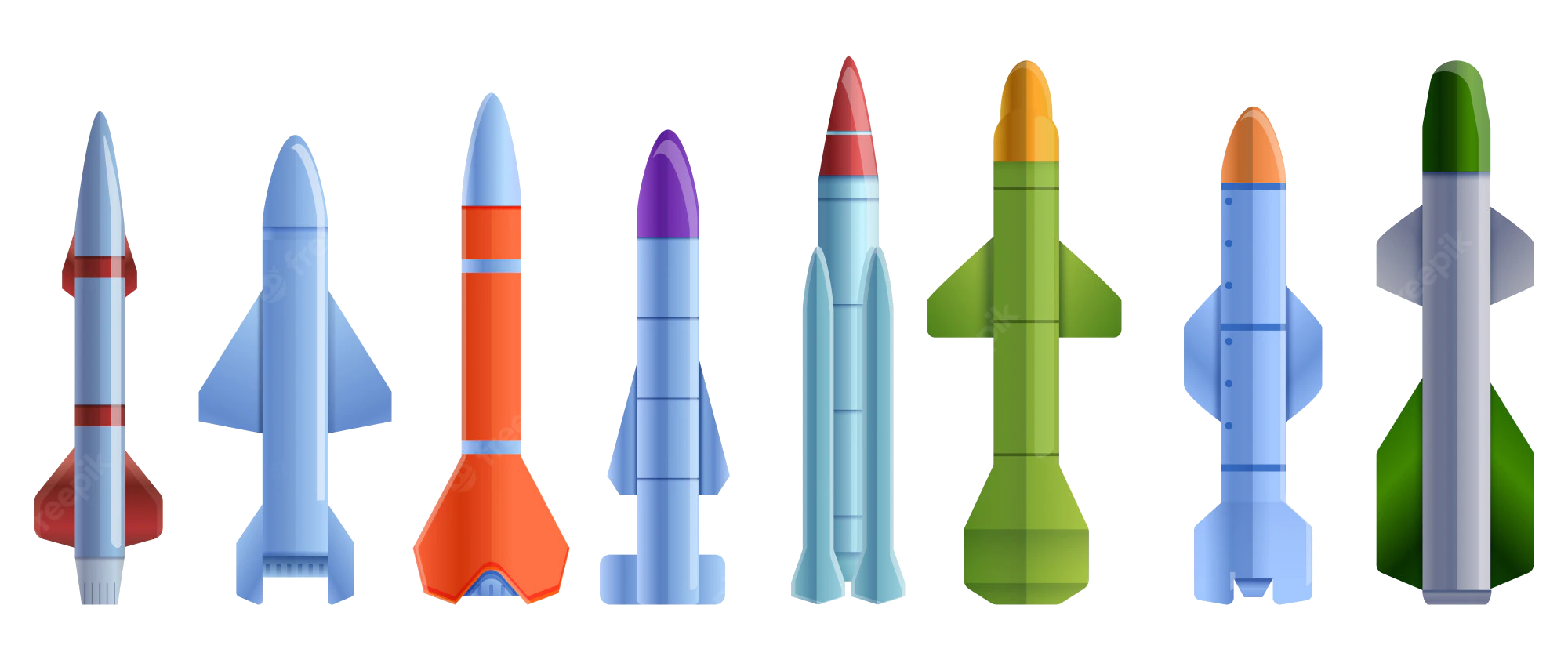 Military, defense and equipment
Military, defense and equipment
 Nuclear Weapon
Nuclear Weapon

 Party and government
Party and government
 Group of the twenty most important industrial and emerging countries
Group of the twenty most important industrial and emerging countries

 Party and government
Party and government
 BRICS
BRICS
 Silk road
Silk road
 Shanghai Cooperation Organization
Shanghai Cooperation Organization

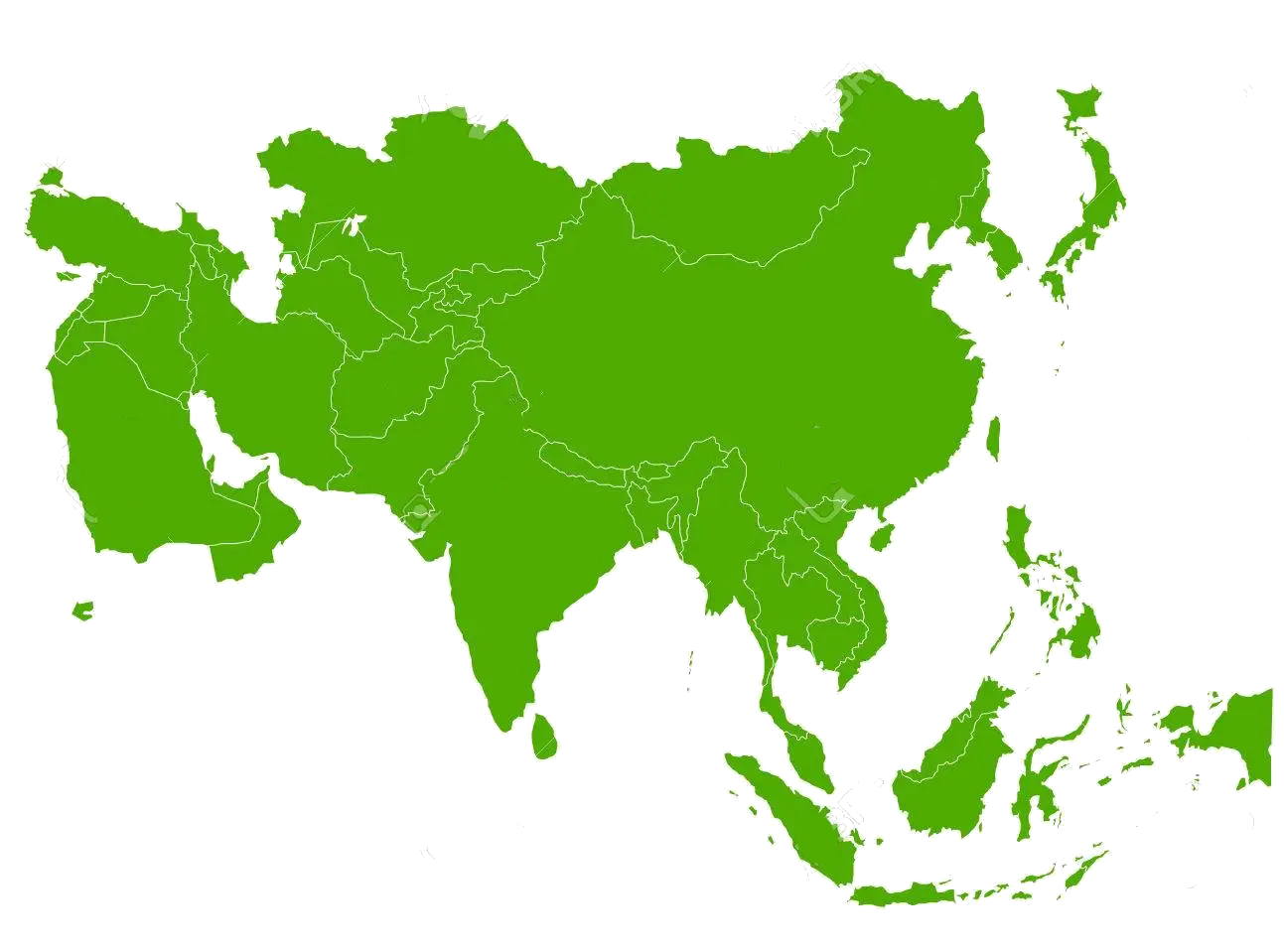 States of Asia
States of Asia

Indien ist ein Staat in Südasien, der den größten Teil des indischen Subkontinents umfasst. Indien ist eine Bundesrepublik, die von 29 Bundesstaaten gebildet wird und außerdem sieben bundesunmittelbare Gebiete umfasst. Der Eigenname der Republik lautet in den beiden landesweit gültigen Amtssprachen Bharat Ganarajya (Hindi) und Republic of India (Englisch). Die moderne demokratische und säkulare indische Republik besteht seit 1949 und seit 1950 gilt die Verfassung Indiens.
Der Himalaya bildet die natürliche Nordgrenze Indiens, im Süden umschließt der Indische Ozean das Staatsgebiet. Indien grenzt an Pakistan, das chinesische Autonome Gebiet Tibet, Nepal, Bhutan, Myanmar (Birma) und Bangladesch. Weitere Nachbarstaaten im Indischen Ozean sind Sri Lanka und die Malediven. Hinsichtlich der Landesfläche ist Indien das flächenmäßig siebtgrößte Land der Erde.
Das Gebiet Indiens ist mindestens seit der bronzezeitlichen Indus-Hochkultur zivilisiert. Der indische Staat ist mit über 1,3 Milliarden Einwohnern (2016)[6] nach der Volksrepublik China (fast 1,4 Mrd.)[7] das zweitbevölkerungsreichste Land der Erde und somit die bevölkerungsreichste Demokratie der Welt.[8] Bei gleichbleibend hohem Bevölkerungswachstum könnte Indien schon im Jahr 2020 China überholen. Durch fortschreitende Modernisierung, Bildung, Wohlstand und Urbanisierung sinkt die Geburtenrate jedoch bereits. Hauptstadt Indiens ist Neu-Delhi, Teil der Metropole Delhi; weitere Ballungsräume sind auch Mumbai, Kalkutta, Chennai, Bangalore, Hyderabad, Ahmedabad und Pune.
Die indische Gesellschaft wird trotz verfassungsmäßiger Religionsfreiheit vom religiösen hierarchischen Kastensystem bestimmt. Die mit Abstand größte Religionsgruppe sind die Hindus, gefolgt von Muslimen, Christen und den historisch aus Indien stammenden Sikhs, Buddhisten und Jaina. Laut Index der menschlichen Entwicklung (HDI) erreicht Indien den Status „mittlere menschliche Entwicklung“ und Platz 131 von 187 weltweit (2016, im Vergleich erreicht die VR China Platz 90).[9] Wirtschaftlich gilt Indien als Schwellenland und gehört zu den O5- und BRICS-Staaten und der Gruppe der zwanzig wichtigsten Industrie- und Schwellenländer (G20). Indien ist trotz seines noch niedrigen Pro-Kopf-Einkommens bereits die drittgrößte bzw. sechstgrößte Wirtschaftsmacht der Welt (kaufkraftbereinigt bzw. nominell) und war 2015 erstmals die am schnellsten wachsende Volkswirtschaft der G20-Gruppe.
印度共和国(印地语:भारत गणराज्य,Bhārat Ganarājya;英语:Republic of India),通称印度(印地语:भारत;英语:India),是位于南亚印度次大陆上的国家,印度面积位列世界第七,印度人口众多,位列世界第二,截至2018年1月印度拥有人口13.4亿,仅次于中国人口的13.8亿,人口成长速度比中国还快,预计近年将交叉。是亚洲第二大也是南亚最大的国家,面积328万平方公里(实际管辖),同时也是世界第三大(购买力平价/PPP)经济体。
印度并非单一民族及文化的国家。印度的民族和种族非常之多,有“民族大熔炉”之称,其中印度斯坦族占印度总人口的大约一半,是印度最大的民族。印度各个民族都拥有各自的语言,仅宪法承认的官方语言就有22种之多,其中印地语和英语被定为印度共和国的联邦官方语言[5],并且法院裁定印度没有国语。[9][10]英语作为共同语言使用在印度非常流行,尤其在南印地位甚至高于印地语,但受限于教育水准,普通民众普遍不精通英语。另外,印度也是一个多宗教多信仰的国家,世界4大宗教其中的佛教和印度教都源自印度。大部分印度人信仰印度教。伊斯兰教在印度也有大量信徒,是印度的第二大宗教,信教者约占印度的14.6%(截至2011年,共有约1亿7千7百万人)。伊斯兰教是在公元8世纪随着阿拉伯帝国的扩张而传播到印度的。公元10世纪后,北印的大多数王朝统治者都是信奉伊斯兰教的,特别是莫卧儿王朝。印度也是众多正式和非正式的多边国际组织的成员,包括世界贸易组织、英联邦、金砖五国、南亚区域合作联盟和不结盟运动等。
以耕种农业、城市手工业、服务业以及其支撑产业为主的部分行业已经相对取得了进展。除了民族文化与北方地形的丰富使印度旅游业颇受欢迎之外,由于时差,大批能说英语的人才也投入外包行业(即是外国企业把客户咨询,电话答录等等服务转移到印度)。另一方面,宝莱坞电影的文化输出在英语圈乃至全球的影响力不亚于世界主流。同时印度还是很多专利过期药物的生产地,以低价格提供可靠的医疗。近年来,印度政府还大力投资本国高等教育,以利于在科学上与国际接轨,例如自主太空研究、南亚半岛生态研究等等。印度最重要的贸易伙伴是美国、欧盟、日本、中国和阿拉伯联合酋长国。
インドは、南アジアに位置し、インド洋の大半とインド亜大陸を領有する連邦共和制国家である。ヒンディー語の正式名称भारत गणराज्य(ラテン文字転写: Bhārat Gaṇarājya、バーラト・ガナラージヤ、英語: Republic of India)を日本語訳したインド共和国とも呼ばれる。
西から時計回りにパキスタン、中華人民共和国、ネパール、ブータン、バングラデシュ、ミャンマー、スリランカ、モルディブ、インドネシアに接しており、アラビア海とベンガル湾の二つの海湾に挟まれて、国内にガンジス川が流れている。首都はニューデリー、最大都市はムンバイ。
1947年にイギリスから独立。インダス文明に遡る古い歴史、世界第二位の人口を持つ。国花は蓮、国樹は印度菩提樹、国獣はベンガルトラ、国鳥はインドクジャク、国の遺産動物はインドゾウである。
インドは南アジア随一の面積と世界第2位の人口を持つ大国である。12億人を超える国民は、多様な民族、言語、宗教によって構成されている。連邦公用語はヒンディー語、他にインド憲法で公認されている言語が21あり主な言語だけで15を超えるため、インドの紙幣には17の言語が印刷されている。議会制民主主義国家であり、有権者数8億人と世界最大である[5]。州政府が一定の独立性を持っているため、各州に中央政府とは別に政府があり大臣がいる。
労働力人口の3分の2が農業に従事する一方、製造業とサービス業が急速に成長している。国民の識字率は74.04%である。ヒンドゥー教徒が最も多く、イスラム教、シーク教がこれに次ぐ。カースト制度による差別は憲法で禁止されているが、今でも農村部では影響は残っている。
アジア開発銀行はインドの中間層が向こう15年間で人口の7割に達するとしている[6]。
India (IAST: Bhārat), also known as the Republic of India (IAST: Bhārat Gaṇarājya),[18][e] is a country in South Asia. It is the seventh largest country by area and with more than 1.3 billion people, it is the second most populous country and the most populous democracy in the world. Bounded by the Indian Ocean on the south, the Arabian Sea on the southwest, and the Bay of Bengal on the southeast, it shares land borders with Pakistan to the west;[f] China, Nepal, and Bhutan to the northeast; and Bangladesh and Myanmar to the east. In the Indian Ocean, India is in the vicinity of Sri Lanka and the Maldives, while its Andaman and Nicobar Islands share a maritime border with Thailand and Indonesia.
The Indian subcontinent was home to the urban Indus Valley Civilisation of the 3rd millennium BCE. In the following millennium, the oldest scriptures associated with Hinduism began to be composed. Social stratification, based on caste, emerged in the first millennium BCE, and Buddhism and Jainism arose. Early political consolidations took place under the Maurya and Gupta empires; later peninsular Middle Kingdoms influenced cultures as far as Southeast Asia. In the medieval era, Judaism, Zoroastrianism, Christianity, and Islam arrived, and Sikhism emerged, all adding to the region's diverse culture. Much of the north fell to the Delhi Sultanate; the south was united under the Vijayanagara Empire. The economy expanded in the 17th century in the Mughal Empire. In the mid-18th century, the subcontinent came under British East India Company rule, and in the mid-19th under British crown rule. A nationalist movement emerged in the late 19th century, which later, under Mahatma Gandhi, was noted for nonviolent resistance and led to India's independence in 1947.
In 2017, the Indian economy was the world's sixth largest by nominal GDP[19] and third largest by purchasing power parity.[15] Following market-based economic reforms in 1991, India became one of the fastest-growing major economies and is considered a newly industrialised country. However, it continues to face the challenges of poverty, corruption, malnutrition, and inadequate public healthcare. A nuclear weapons state and regional power, it has the second largest standing army in the world and ranks fifth in military expenditure among nations. India is a federal republic governed under a parliamentary system and consists of 29 states and 7 union territories. A pluralistic, multilingual and multi-ethnic society, it is also home to a diversity of wildlife in a variety of protected habitats.
L'Inde, officiellement la république de l'Inde4, en hindi : भारत (Bhārat) et भारत गणराज्य (Bhārat Gaṇarājya), est un pays d'Asie du Sud qui occupe la majeure partie du sous-continent indien. Sa capitale est New Delhi. L'Inde est le deuxième pays le plus peuplé et le septième pays le plus grand du monde. Le littoral indien s'étend sur plus de sept mille kilomètres. Le pays a des frontières communes avec le Pakistan à l'ouest, la Chine, le Népal, et le Bhoutan au nord et au nord-est, le Bangladesh et la Birmanie à l'est. Sur l'océan Indien, l'Inde est à proximité des Maldives au sud-ouest, du Sri Lanka et de l'Indonésie au sud-est. L'Inde revendique également une frontière avec l'Afghanistan au nord-ouest. L'Inde dispose de l'arme nucléaire depuis 1974 après avoir fait des essais officiels.
L'Inde est un foyer de civilisations parmi les plus anciennes du monde, la civilisation de la vallée de l'Indus s'y est développée dès 3000 av. J.-C. Le sous-continent indien a abrité de vastes empires et est présent sur les routes commerciales dès l'Antiquité. L'Inde est la terre de naissance de quatre religions majeures — l'hindouisme, le jaïnisme, le bouddhisme et le sikhisme — alors que le zoroastrisme, le christianisme et l'islam s'y sont implantés durant le Ier millénaire. L'Inde est aujourd'hui un pays très divers sur le plan religieux, linguistique et culturel.
Le pays a été progressivement annexé par la Compagnie anglaise des Indes avant de passer sous le contrôle du Royaume-Uni au XIXe siècle. L'Inde devient indépendante en 1947 après une lutte marquée par la résistance non-violente du Mohandas Karamchand Gandhi. Le pays est depuis 1950 une république parlementaire fédérale considérée comme la démocratie la plus peuplée au monde.
En 2017, l'économie indienne est la sixième du monde en PIB nominal et la troisième en PIB à parité de pouvoir d'achat. L'Inde, pays à forte croissance économique, est considéré comme un nouveau pays industrialisé. Cependant certains problèmes comme la pauvreté, l'analphabétisme ou la corruption restent très importants.
L'India (hindi: भारत Bhārat), ufficialmente Repubblica dell'India (hindi: भारत गणराज्य Bhārat Gaṇarājya), è uno Stato federale dell'Asia meridionale, con capitale Nuova Delhi.
È il settimo Stato per estensione geografica al mondo (3 287 263 km²) e il secondo più popolato, con 1 335 250 000 abitanti (censimento 2017).[8] È bagnato dall'oceano Indiano a sud, dal mar Arabico a ovest e dal golfo del Bengala a est. Possiede una linea costiera che si snoda per 7.517 km.[9] Confina con il Pakistan a ovest,[10] Cina, Nepal e Bhutan a nord-est, Bangladesh e Birmania a est. Suoi vicini prossimi, separati dell'oceano Indiano, sono lo Sri Lanka a sud-est e le Maldive a sud-ovest.
Sede della civiltà della valle dell'Indo e regione di rotte commerciali storiche e di vasti imperi, il subcontinente indiano è stato identificato con il suo commercio e la ricchezza culturale per gran parte della sua lunga storia.[11] Quattro grandi religioni del mondo (l'induismo, il buddismo, il giainismo e il sikhismo) sono nate qui, mentre lo zoroastrismo, l'ebraismo, il cristianesimo e l'islam arrivarono entro il I millennio d.C. dando forma nella regione a una grandissima diversità culturale. Gradualmente annessa alla Compagnia britannica delle Indie orientali dai primi decenni del XVIII secolo e colonizzata dal Regno Unito dalla metà del XIX secolo, l'India è diventata un moderno Stato nazionale nel 1947, dopo una lotta per l'indipendenza che è stata caratterizzata da una diffusa resistenza non violenta guidata da Gandhi.
L'India è la dodicesima più grande economia del mondo in termini nominali e la quarta in termini di potere d'acquisto. Riforme economiche hanno trasformato lo Stato nella seconda economia a più rapida crescita[12] (è uno dei cinque Paesi a cui ci si riferisce con l'acronimo BRICS),[13] ma nonostante ciò il Paese soffre ancora di alti livelli di povertà, analfabetismo e malnutrizione, oltre ad avere un sistema sociale basato sulle caste. Società pluralistica, multilingue e multietnica, l'India è inoltre ricca sul piano naturale, con un'ampia diversità di fauna selvatica e di habitat protetti.
La India8 ―oficialmente República de la India (en hindi, भारत गणराज्य, Bhārat Gaṇarājya; en inglés, Republic of India)― es un país soberano ubicado en el sur de Asia. Con sus más de 1240 millones de habitantes, es el segundo país del mundo por población ―después de la República Popular China (con 1395 millones). Su superficie es de 3 287 263 km²,3 lo cual lo ubica en el séptimo lugar entre los países más extensos del planeta. Limita con el océano Índico al sur, con el mar Arábigo al oeste y con el golfo de Bengala al este, a lo largo de una línea costera de más de 7517 kilómetros.9
La India también limita con Pakistán al oeste;10 al norte con China, Nepal y Bután y al este con Bangladés y Birmania. Además, la India se encuentra cerca de las islas de Sri Lanka, Maldivas e Indonesia. Su capital es Nueva Delhi y su ciudad más poblada es Bombay.
Hogar de la cultura del valle del Indo y una región histórica por sus rutas comerciales y grandes imperios, el subcontinente indio fue identificado por su riqueza cultural y comercial en la mayor parte de su larga historia.11 Cuatro de las religiones más importantes del mundo, el hinduismo, el budismo, el jainismo y el sijismo se originaron allí, mientras que otras religiones como el zoroastrismo, el judaísmo, el cristianismo y el islam llegaron durante el I milenio, dando forma a diversas culturas de la región.
Gradualmente anexada por la Compañía Británica de las Indias Orientales desde principios del siglo XVIII y colonizada por el Reino Unido desde mediados del siglo XIX, la India se convirtió en una nación independiente en 1947, tras una lucha por la independencia que estuvo marcada por un movimiento de no violencia.12
La India es una república federal13 compuesta por 29 estados y 7 territorios de la Unión, con un sistema de democracia parlamentaria. En 2017, la economía india es la tercera más grande del mundo y la sexta en términos de PIB nominal. Las reformas económicas de 1991 la han transformado en una de las economías de más rápido crecimiento;14 sin embargo, todavía sufre de problemas como los altos niveles de pobreza, analfabetismo,15 pandemias, malnutrición y constantes violaciones de los derechos de las mujeres. Además de una sociedad plural en lo religioso, multilingüe y multiétnica, la India también alberga una flora y fauna diversas en diferentes hábitats protegidos.
Además, la República de la India es uno de los diez países que posee un arsenal nuclear y no es signataria del Tratado de No Proliferación Nuclear, dado que, en sus actuales términos, no le permitiría mantener su armamento atómico.
И́ндия (хинди भारत Bhārat, англ. India), официальное название — Респу́блика И́ндия (хинди भारत गणराज्य Bhārat Gaṇarājya, англ. Republic of India) — государство в Южной Азии. Население — 1 340 468 000 человек (22 декабря 2017)[6], территория — 3 287 263 км², по обоим этим показателям является крупнейшей страной Южной Азии. Занимает второе место в мире по численности населения и седьмое по территории. Столица — Нью-Дели. Государственные языки — хинди и английский.
Федеративное государство, парламентская республика. Премьер-министр — Нарендра Моди, президент — Рам Натх Ковинд.
 Atomic bomb
Atomic bomb
 BRICS summit
BRICS summit
 China
China

 History
History
 M 1500 - 2000 AD
M 1500 - 2000 AD

 History
History

 History
History

 History
History
 N 2000 - 2100 AD
N 2000 - 2100 AD




 Military, defense and equipment
Military, defense and equipment
 Nuclear Weapon
Nuclear Weapon

 Party and government
Party and government
 Group of the twenty most important industrial and emerging countries
Group of the twenty most important industrial and emerging countries

 Party and government
Party and government
 BRICS
BRICS
 Silk road
Silk road
 Shanghai Cooperation Organization
Shanghai Cooperation Organization

 States of Asia
States of Asia

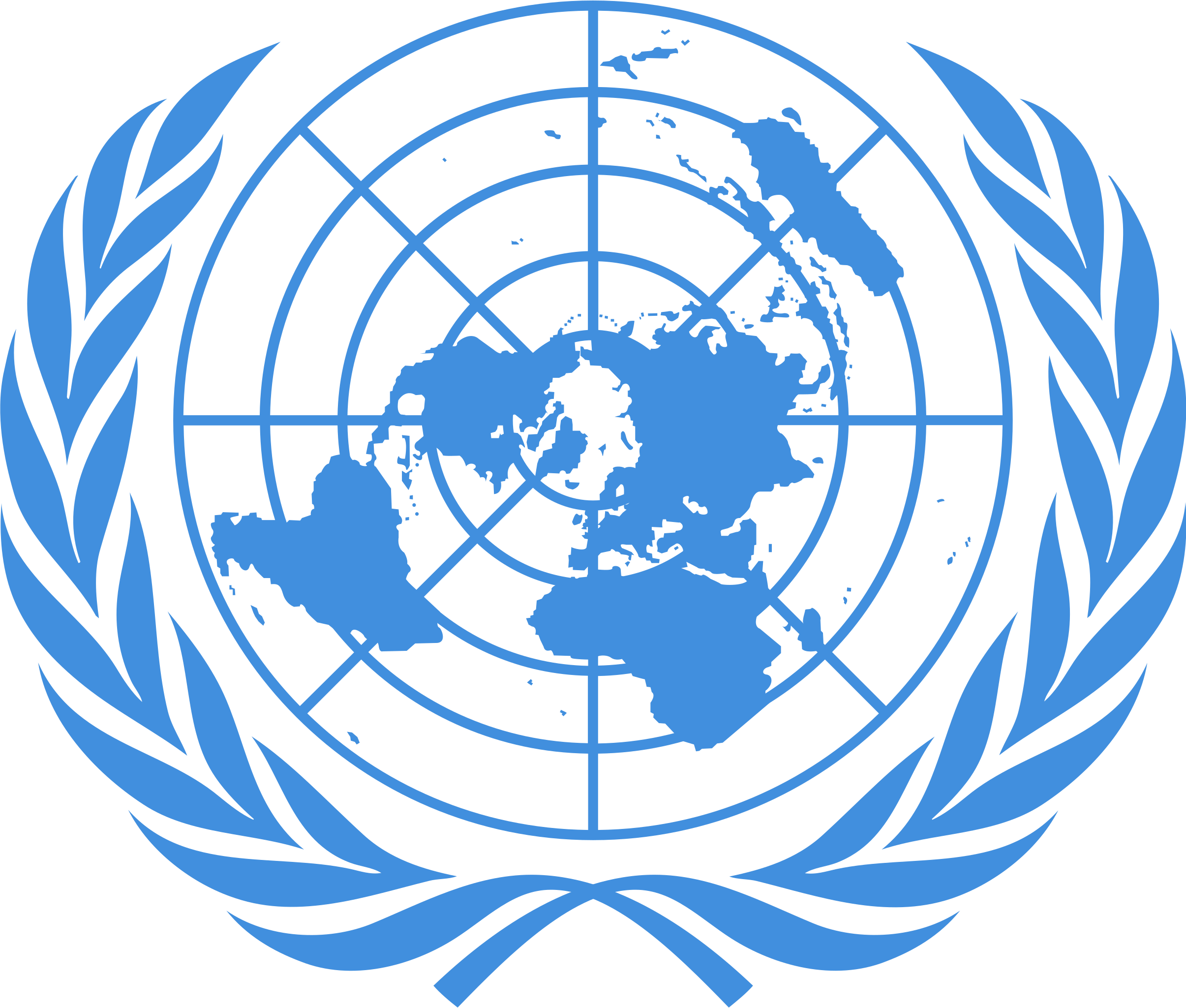 United Nations
United Nations
 United Nations Security Council
United Nations Security Council
 Hydrogen bomb
Hydrogen bomb

Die Volksrepublik China (chinesisch 中华人民共和国, Pinyin Zhōnghuá Rénmín Gònghéguó ![]() [tʂʊŋ˥xua˧˥ʐɛn˧˥mɪn˧˥kʊŋ˥˩xə˧˥kuɔ˧˥]), allgemein als China bezeichnet, ist ein am 1. Oktober 1949 gegründeter sozialistischer Staat in Ostasien. Mit rund 1,4 Milliarden Einwohnern stellt China das bevölkerungsreichste und gemessen an seiner Gesamtfläche das viertgrößte Land der Erde dar.[7]
[tʂʊŋ˥xua˧˥ʐɛn˧˥mɪn˧˥kʊŋ˥˩xə˧˥kuɔ˧˥]), allgemein als China bezeichnet, ist ein am 1. Oktober 1949 gegründeter sozialistischer Staat in Ostasien. Mit rund 1,4 Milliarden Einwohnern stellt China das bevölkerungsreichste und gemessen an seiner Gesamtfläche das viertgrößte Land der Erde dar.[7]
Gemäß ihrer Verfassung steht die Volksrepublik China „unter der demokratischen Diktatur des Volkes“, wird jedoch seit 1949 autoritär von der Kommunistischen Partei Chinas (KPCh) regiert. Wirtschaftlich weist China seit vielen Jahren eine hohe Dynamik auf. Auf Grundlage ihrer Reform- und Öffnungspolitik entwickelte sich China beginnend ab 1978 zu einer wirtschaftlichen und technologischen Großmacht.[8] Von der Weltbank wird das Land seit 2016 zu den Staaten mit einem Einkommensniveau im oberen Mittelfeld gerechnet. Seit 2010 ist China der Staat mit der umfangreichsten Warenausfuhr und gemessen an der Kaufkraftparität seit 2016 die größte Volkswirtschaft der Welt. Das jährliche Wirtschaftswachstum lag zwischen 2010 und 2017 im Durchschnitt bei 6,7 Prozent.[9]
Die Volksrepublik China zählt zu den offiziellen Atommächten, ist ständiges Mitglied des Weltsicherheitsrates sowie unter anderem Mitglied der Welthandelsorganisation, Weltbank, APEC, ASEAN, BRICS, UNESCO, Interpol, G20.
中华人民共和国,通称中国[13],是位于东亚的社会主义国家,首都位于北京[14]。中国领土陆地面积约960万平方千米,是世界上纯陆地[注 13]面积第二大、陆地[注 14]面积第三大、总面积第三大或第四大的国家[注 15][15],其分为23个省份[注 16]、5个自治区、4个直辖市和2个特别行政区。被视为亚洲地区重要地域大国,也被视为潜在超级大国[16][17][18]。是世界上人口最多的国家,约有13.9亿人[8],同时也是一个多民族国家,共有已确认的民族56个,其中汉族人口占91.51%[19]。以普通话和规范汉字为国家通用语言文字,少数民族地区可使用自己民族的语言文字。
中国地势西高东低而呈现三级阶梯分布,大部分地区属于温带、副热带季风气候,地理景致与气候型态丰富多样,有冰川、丹霞、黄土、沙漠、喀斯特等多种地貌[20],北方有干草原和荒漠,南方有热带雨林,西部和西南边境则有天山山脉、帕米尔高原、喀喇昆仑山脉和喜马拉雅山脉。东临太平洋,领海由渤海(内海)以及黄海、东海、南海三大边海组成[21],水域面积约470万平方千米,分布有大小岛屿7600个[22]。
科技方面,中国在航天航空、高速铁路、新能源、核技术、超级计算机、量子网络等领域有较强实力,研发经费则位居世界第二[23]。国防预算为世界第二高,拥有世界规模最大的常备部队及三位一体的核打击能力[24][25]。自1986年实行九年义务教育制度,就读公立学校的学生由政府提供其间学费。1978年改革开放后,中国成为经济增长最快的经济体之一[26][27]。当前,中国对外贸易额世界第一,是世界上最大的商品出口国及第二大的进口国,依国内生产总值按购买力平价位列世界第一、而国际汇率则排名世界第二[28]。2017年,中国人均国内生产总值依购买力平价为18,119美元,列全球第76位;依国际汇率则为8,643美元,列全球第72位,均尚低于世界水平[10]。改革开放以来,尽管贫困问题得到极大改善,但收入差距较大,且区域间发展不均——东部沿海地区的经济较中西部及东北地区发达——的问题仍极需解决[29][30]。
1949年中国共产党在内战中取得优势,终结了中国国民党在中国大陆的统治,于同年10月1日建立了中华人民共和国中央人民政府,并与退守台湾地区的中华民国政府形成两岸分治的政治格局。遵循和平共处五项原则的外交政策,在1971年取得在联合国的中国代表权后,成为联合国安全理事会常任理事国并加入了许多国际组织。
中華人民共和国(ちゅうかじんみんきょうわこく、簡体字: 中华人民共和国、繁体字: 中華人民共和國、拼音: 、英語: People's Republic of China, PRC)、通称中国(ちゅうごく、拼音: 、英語: China)は、東アジアに位置する主権国家。首都・北京市を政庁所在地とし、13億8千万人以上の人口で世界一人口が多い国でもある。
中華人民共和国憲法第一条で社会主義国家であることを明言しており、政治は中国共産党が指導的地位を有するヘゲモニー政党制を採用している[4]。
中華人民共和国は、中華民国統治下の中国で1921年に結党された中国共産党が、ソビエト連邦の支援を受けながら国共合作・抗日戦争(八路軍・新四軍)・国共内戦を経て国民政府を台湾島へ放逐[5]し、1949年10月1日に北京市で建国式典(中華人民共和国開国大典)を開催したことで成立した。
同国は国共内戦の延長で1954年に「台湾解放宣言」[6]を出し、第一次台湾海峡危機(1954年~1955年)と金門砲戦(1958年~1979年)を起こしたが武力による台湾占領には至らなかった。同国は2010年代に入ると一つの中国による台湾問題の解決を「(自国の)核心的利益の一つ」と規定するようになり、基本的には九二共識の合意に基づいた平和的な中国統一を目指しているが、一方で人民解放軍の武力による台湾制圧の可能性も指摘されている[7]。
計測方法によるが、同国は陸地面積では世界第2位[8]、総面積では世界第3位又は第4位である。同国の地形は、乾燥した北の森林ステップ、ゴビ砂漠、タクラマカン砂漠から、多湿な南の亜熱帯の森林まで広大かつ多様である。ヒマラヤ山脈、カラコルム山脈、パミール高原、天山山脈により、同国は南及び中央アジアから切り離されている。長さ世界第3位の長江及び同世界第6位の黄河は、チベット高原から人口密度の高い東の沿岸地域に流れ、古代には黄河文明や長江文明を興してきた。同国の太平洋に沿った海岸線は14,500kmの長さで、渤海、黄海、東シナ海、南シナ海に囲まれている。同国の国土は、22省級行政区、5自治区、北京市・天津市・上海市・重慶市の4直轄市、大部分が自治的な香港・マカオの2特別行政区によって構成されている。
中国は、繁栄と衰退の繰り返しだと考えられる過去2000年間の大部分で世界最大かつ最も複雑な経済を有した[9][10]。1978年における改革開放の導入以来、外資流入の勢いが増してゆき、産業構造が政策から転換して、中国は世界で最も成長率が高い主要経済大国の1つになった(#経済)。ソ連の純粋な社会主義体制と距離をとり、「経済面は有限な資本主義、政治面は一党独裁を守る」のような国家形態に変更したのである(中国特色社会主義)。
2016年時点で、同国は名目GDP及び貿易輸入額のいずれにおいても世界第2位であり(2014年には国際通貨基金・世界銀行・CIAワールドファクトブックによると購買力平価は世界最大のGDPとなった[11][12][13])、購買力平価GDPと貿易輸出額は世界一位である[14]。同国は核保有国に認められ、世界第2位の防衛予算で世界最大の常備軍を有する。中華人民共和国は1971年以来国際連合加盟国であり、中華民国の後任として安全保障理事会常任理事国である。中国は多数の公式及び非公式の多国間機構加盟国であり、WTO、APEC、BRICs、上海協力機構、BCIM、G20がこれに該当する。中国はアジアの地域大国であり、多数の解説者により潜在的な超大国として特徴付けられてきた[15][16]。なお2017年7月現在、中華人民共和国の世界遺産はイタリアについで52件ある。国内には文化遺産が22件、自然遺産が4件、複合遺産が4件存在する。
China, officially the People's Republic of China (PRC), is a country in East Asia and the world's most populous country, with a population of around 1.404 billion.[13] Covering approximately 9,600,000 square kilometers (3,700,000 sq mi), it is the third- or fourth-largest country by total area.[k][19] Governed by the Communist Party of China, the state exercises jurisdiction over 22 provinces, five autonomous regions, four direct-controlled municipalities (Beijing, Tianjin, Shanghai, and Chongqing), and the special administrative regions of Hong Kong and Macau.
China emerged as one of the world's earliest civilizations, in the fertile basin of the Yellow River in the North China Plain. For millennia, China's political system was based on hereditary monarchies, or dynasties, beginning with the semi-legendary Xia dynasty in 21st century BCE.[20] Since then, China has expanded, fractured, and re-unified numerous times. In the 3rd century BCE, the Qin reunited core China and established the first Chinese empire. The succeeding Han dynasty, which ruled from 206 BC until 220 AD, saw some of the most advanced technology at that time, including papermaking and the compass,[21] along with agricultural and medical improvements. The invention of gunpowder and movable type in the Tang dynasty (618–907) and Northern Song (960–1127) completed the Four Great Inventions. Tang culture spread widely in Asia, as the new Silk Route brought traders to as far as Mesopotamia and Horn of Africa.[22] Dynastic rule ended in 1912 with the Xinhai Revolution, when a republic replaced the Qing dynasty. The Chinese Civil War resulted in a division of territory in 1949, when the Communist Party of China established the People's Republic of China, a unitary one-party sovereign state on Mainland China, while the Kuomintang-led government retreated to the island of Taiwan. The political status of Taiwan remains disputed.
Since the introduction of economic reforms in 1978, China's economy has been one of the world's fastest-growing with annual growth rates consistently above 6 percent.[23] As of 2016, it is the world's second-largest economy by nominal GDP and largest by purchasing power parity (PPP).[24] China is also the world's largest exporter and second-largest importer of goods.[25] China is a recognized nuclear weapons state and has the world's largest standing army and second-largest defense budget.[26][27] The PRC is a permanent member of the United Nations Security Council as it replaced the ROC in 1971, as well as an active global partner of ASEAN Plus mechanism. China is also a leading member of numerous formal and informal multilateral organizations, including the Shanghai Cooperation Organization (SCO), WTO, APEC, BRICS, the BCIM, and the G20. In recent times, China has been widely characterized as a global superpower.[28][29][30]
La Chined, en forme longue la république populaire de Chine (ou République populaire de Chinee, RPC, chinois simplifié : 中华人民共和国 ; chinois traditionnel : 中華人民共和國 ; pinyin : , prononcé [tʂʊŋ˥xua˧˥ɻən˧˥mɪn˧˥kʊŋ˥˩xə˧˥kuɔ˧˥] Écouter), parfois appelée Chine populaire, est un pays d'Asie de l'Est. Avec près d'1,4 milliard d'habitants, soit environ un sixième de la population mondiale, elle est le pays le plus peuplé du monde6. Elle compte huit agglomérations de plus de dix millions d'habitants, dont la capitale Pékin,

